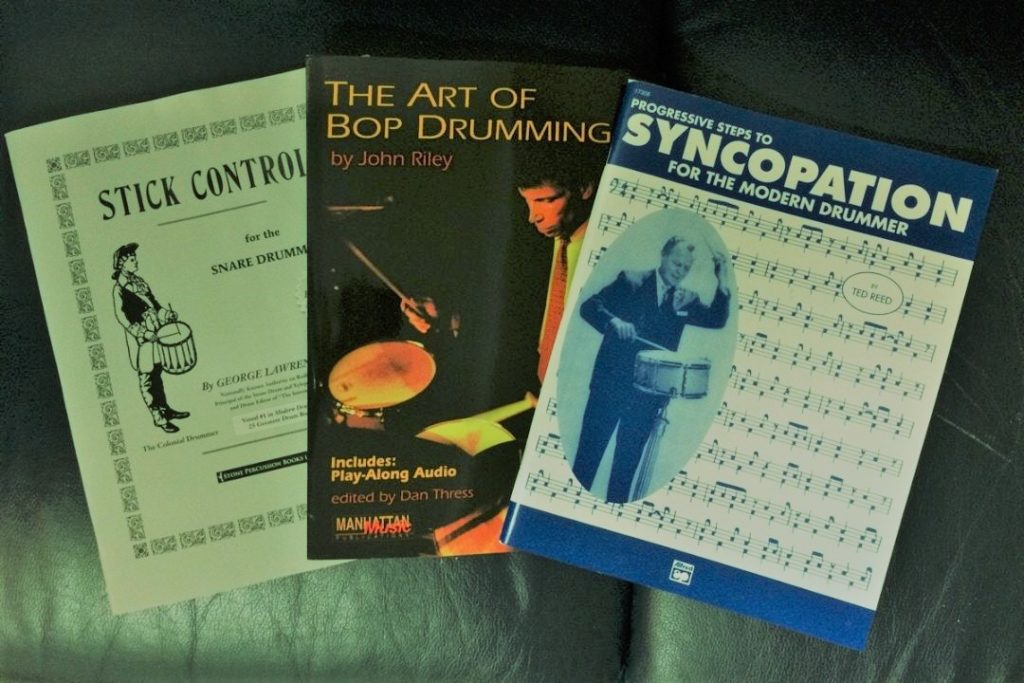No matter how long you’ve been playing for, every drummer should have at least some of the best drum books in the world in their collection. Why?
This generation consumes a lot of YouTube videos, both for entertainment and learning purposes.
In my opinion, drum books are still the best source of practice material when it comes to drummers, as they contain new patterns, different techniques, and hand and foot coordination exercises, instead of chasing the next big thing – Gospel Chops, I’m looking at you!
And if video is so important to you, some of these books include a DVD with video lessons (or at least, audio tracks) you can follow while practicing.
Also, to enjoy those books, you need to know how to read drum sheet music, of course. You do, don’t you? Sure, otherwise you wouldn’t be searching for drum books.
But, if for some reason you don’t, HERE’s my article on how to read drum sheet music. It focuses on all the basic things you should know, from the staff and its components to the notes and rests and even the drum notation key.
Read it carefully, focus on understanding instead of memorizing it and I’m pretty sure you’ll finish the article with at least the basic knowledge, which is enough to get you going for now.
Back to the best drum books…
What makes them great? Well, it’s hard to answer, but most of them:
- Include exercises that work well with most styles and musical applications;
- Offer materials with practical applications – something you play on a gig, for example;
- Allow you to explore new ideas, instead of the same grooves and fills you play every day;
- Develop both technical skills and musicality.
We compiled an unorganized list to simplify your search for the best drum books. Some of them fit into multiple categories so finding the correct category is subjective.
Here’s my list of the best drum books every drummer should have:
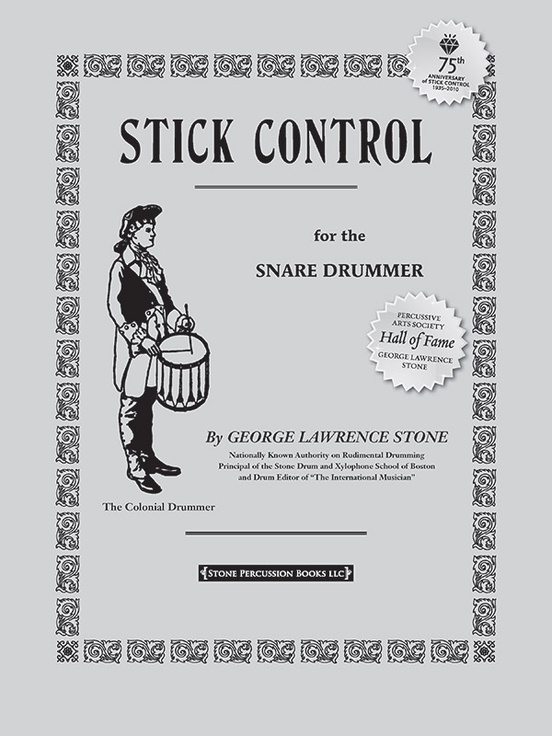 This is widely regarded as the best drum book ever created. If there’s a drumming bible, this has to be it.
This is widely regarded as the best drum book ever created. If there’s a drumming bible, this has to be it.
The author is George Lawrence Stone, an American drummer, and author that originally published it way back in 1935.
Influential drummers like Joe Morello and Vic Firth (yeah, that one) were some of his students.
The book itself is filled with snare drum exercises that get harder as you progress and emphasizes developing your hand technique, especially the weaker hand, and drumstick control.
There are hundreds of sticking patterns that work on your speed, control, precision, power, and coordination on the snare drum, and drum set in general.
Among the 48 pages, there’s everything from single-beat combinations to triplets, short roll combinations/progressions, flam beats, flam triplets, and even dotted notes.
It’s also the perfect book for anyone that wants to play the drums but doesn’t have access to one at all times.
A metronome (or a metronome phone app), a pair of drumsticks, and a practice pad are everything you need to follow the book.
The title is explicit enough, but not including exercises to develop your foot as well as your hands is the only thing preventing this book from reaching the perfect score.
It doesn’t matter what style of music you play or how advanced you’re, any drummer should read and practice this book from start to finish to build a solid foundation on the drum set.
Stick Control for the Snare Drummer offers so much for such a low price that there’s no excuse for you to not have it on your shelf.
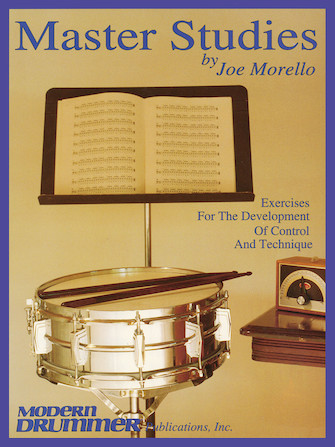 Master Studies was written by Joe Morello, an American jazz drummer best known for his work with the Dave Brubeck Quartet.
Master Studies was written by Joe Morello, an American jazz drummer best known for his work with the Dave Brubeck Quartet.
We also know he was one of George Lawrence Stone’s students, the writer of Stick Control for the Snare Drummer.
While studying, Morello created his variations of the Stick Control patterns, now compiled in the Master Studies book.
It’s safe to assume that this book is a development of the material found in the Stick Control and therefore it also works your speed, control, precision, power, and coordination.
It’s another 48 pages book and some of the topics included are buzz-roll exercises, single and double-stroke patterns, accent studies, control studies, flam patterns, dynamic development, endurance studies, and more.
Just like the Stick Control, it’s perfect for someone that doesn’t have a drum set to practice but wants to improve their skills with a simple practice pad.
There are no foot exercises either, but who notices your feet when your hands are at the level of a drum master?
For around $10 you get the “Part II” of Stick Control to further expand your drumming skills to the next level.
 After Stick Control, this is probably the most beloved drum book ever, as it’s the ultimate syncopation guidebook for drummers.
After Stick Control, this is probably the most beloved drum book ever, as it’s the ultimate syncopation guidebook for drummers.
Originally published in 1996 by Alfred Music, it’s one the most versatile, yet simple drum books as of today.
Despite its simplicity, this 64 pages book starts at a beginner level difficulty and fully develops into advanced rhythms, accents, and of course, syncopation.
Besides syncopation, this is a great book to test and work on your reading skills as it includes many different notes and rests like dotted eights, accent eights, eighth-note triplets, sixteenth notes, and much more.
The magic of it comes from the fact that it applies dots and accents where they normally wouldn’t be, which prepares you for anything and everything.
Unlike the previous two, the book helps you develop both the snare and the bass drum.
Although it doesn’t include full kit exercises/patterns, with enough imagination, you can add a ride pattern to the original exercises and voila, you just made your own groove.
It’s great to challenge your creativity as well as your sense of rhythm and limb independence, three important skills for any future professional drummer.
It’s not suited for complete beginners (start with Stick Control) as it’s kind of challenging, and sometimes frustrating, but it’s without a doubt a must-have when it comes to drum books.
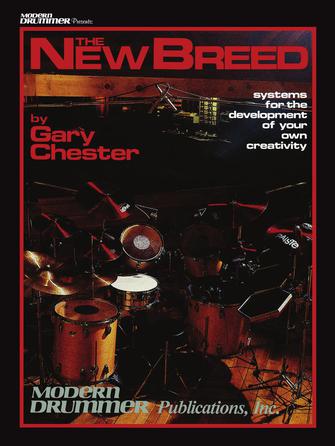 From the 1950s to the 1970s, Gary Chester was one of the busiest new work studio drummers and played on many hit records from that period.
From the 1950s to the 1970s, Gary Chester was one of the busiest new work studio drummers and played on many hit records from that period.
Chester gathered a few decades of studio experience and developed a book aimed to expand your limb independence, improve your reading skills, work on your ambidexterity and ability to play with a click.
The book itself isn’t as beginner-friendly as the first two, since some of the exercises are indeed a challenge, especially if you lack above-average limb independence or an internal clock.
It’s 48 pages long and includes a CD (make sure it does, some sellers don’t) so you can follow along while working on the patterns. It’s especially beneficial if you’re not that good at reading drum sheet music.
All in all, if you’re an intermediate drummer looking to challenge your independence, control, weak hand, and sheet reading, this is one of the best challenges you could ever face.
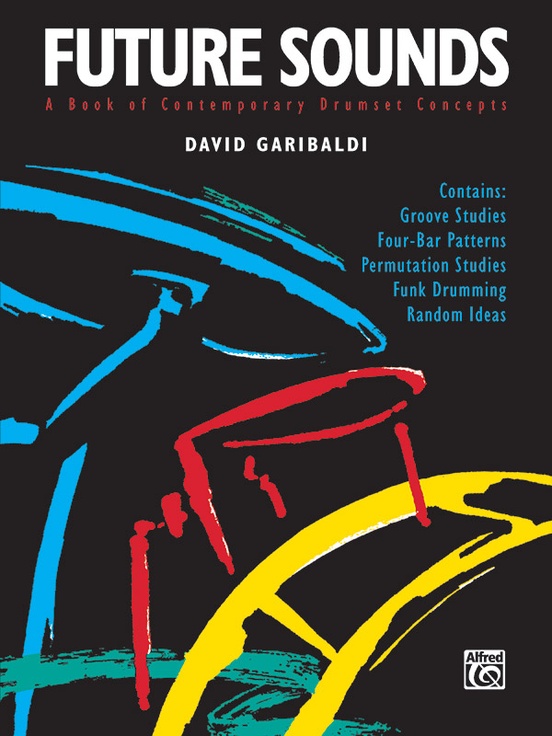 David Garibaldi is an American drummer that plays mostly Funk, R&B, and Soul music.
David Garibaldi is an American drummer that plays mostly Funk, R&B, and Soul music.
If that name doesn’t ring a bell, his band name might, since he’s best known for his work with the band Tower of Power.
The book contains 64 pages (plus a CD) and it brings the funk machine out of you by developing your groove/pocket and including more ghost notes than a haunted house.
A big portion of the grooves are linear and follow the same path of both the Stick Control and Master Studies. The major difference is the fact that it applies to the drum set, instead of mostly the snare drum.
Unlike the first two, it doesn’t build a solid drumming foundation, as it’s not aimed at beginners. Instead, it expands your vocabulary by adding new (to you) drumming styles, like funk.
On that note, it’s also really fun to practice as it will make you, and your future audiences dance like never before.
If you’re looking for a material with a variety of stickings, accents, and ghost notes that works on your dynamic control by adding flavor to your grooves, Future Sounds is everything you need.
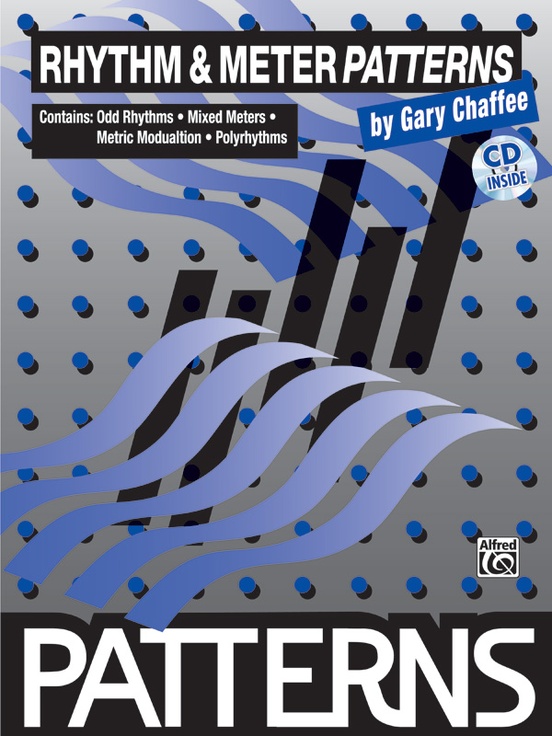
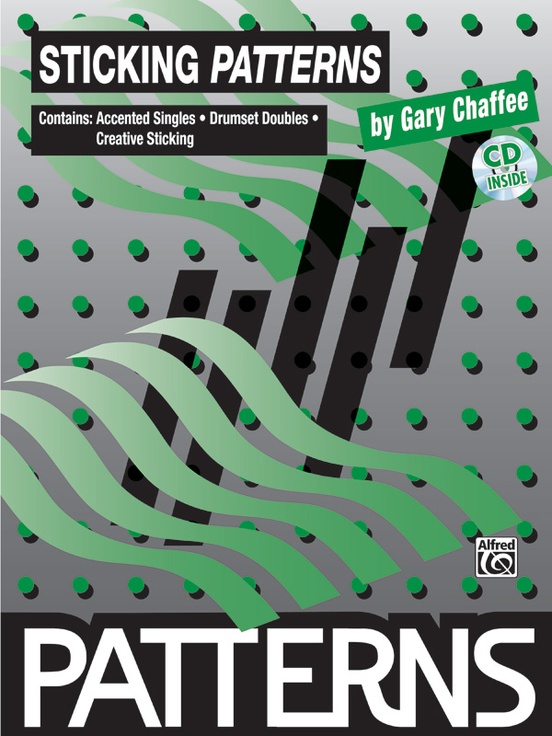
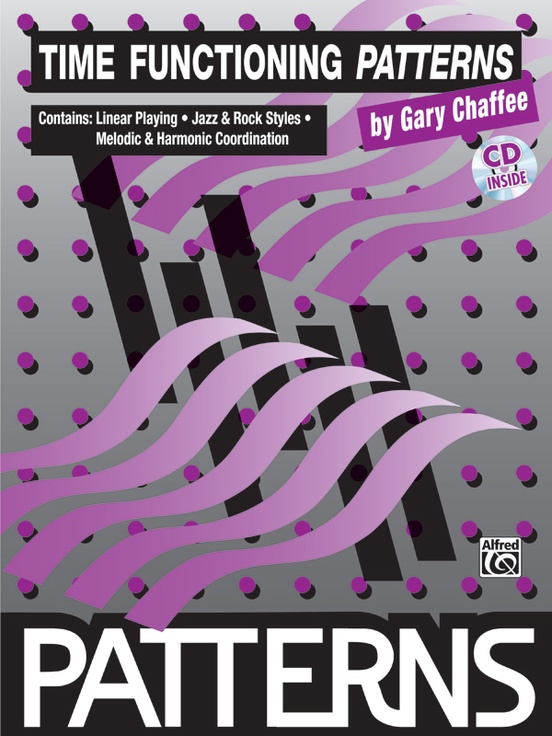

Gary Chaffe is not only an amazing drummer but also one of the most respected drum teachers.
Well-known drummers like Vinnie Colaiuta, Todd Sucherman, and Steve Smith were once his students.
This isn’t a book but instead, a book series:
- Rhythm and Meter Patterns
- Sticking Patterns
- Time Functioning Patterns
- Technique Patterns
The Rhythm and Meter Patterns book was first published in 1994 with 88 pages (and a CD for every single one).
It’s not intended for a beginner as it brings a new range of rhythmic and metric possibilities, like odd rhythms, metric modulation, mixed meters, and polyrhythms.
Sticking Patterns made the light of the day in 1994, with 108 pages. It shows Gary’s unique approach to stickings and especially emphasizes their application to the drum set.
It includes exercises with accented singles, doubles, and creative stickings.
Time Functioning Patterns is the shortest book of the series with only 52 pages, also published in 1994.
It focuses on time functioning skills in both rock and jazz, and it covers some topics like cymbal ostinatos and linear phrasing.
Last but not the least, there’s the Technique Patterns book with 88 pages, published with all the previous three, back in 1994.
This book challenges you with a bunch of routines designed to improve both your hands and foot technical ability, like finger control, hand and foot combinations, and endurance.
From the four-book series, this should be easiest to start with but Gary himself admits there’s no correct order to follow nor do you need to finish one before starting the next.
They’re not cheap, especially if you buy the series, but they offer great value for anyone looking to take their drumming skills to the next level.
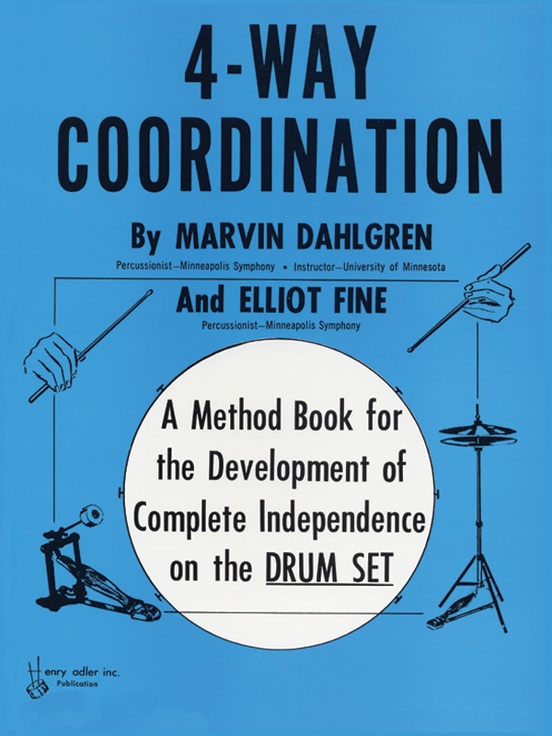 Every drummer knows how hard it is to build 4-way independence on the drum set, but also how important it is to achieve.
Every drummer knows how hard it is to build 4-way independence on the drum set, but also how important it is to achieve.
This is a classic book, and the first to focus entirely on independence and coordination on the drum kit.
Throughout the 56 pages, there’s a wide variety of exercises from simple patterns to advanced polyrhythms.
Since it focuses on both hands and feet, it’s great to develop your weak hand as well as coordination between all four limbs.
Despite its importance, it’s a fairly simple, straightforward book that even most beginner drummers should have no problem following.
If you feel you’re lacking limb independence, as a drummer, it’s time to improve.
Following this simplistic book can be a step in the right direction when it comes to your drumming career.
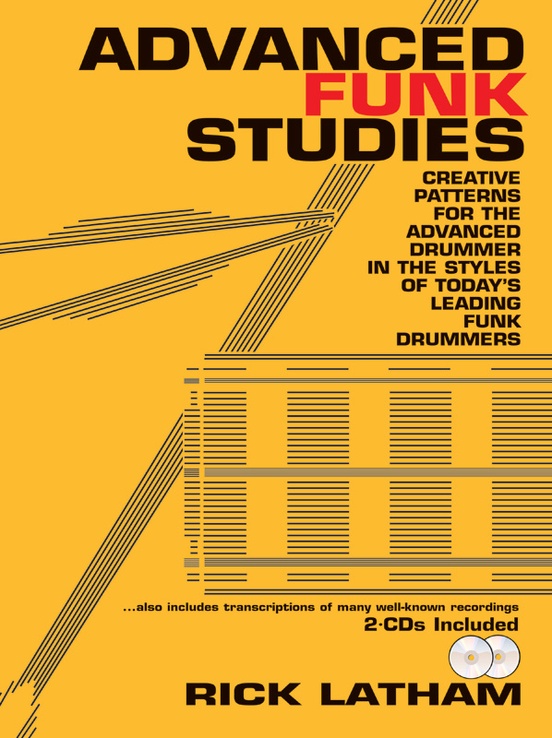 Rick Latham is one of the most in-demand studio/touring drummers in the world and he’s also the author of the 80s classic, Advanced Funk Studies.
Rick Latham is one of the most in-demand studio/touring drummers in the world and he’s also the author of the 80s classic, Advanced Funk Studies.
This is by no means a drum technique book. In other words, if you’re a beginner, there are better alternatives like the first books on this list.
It focuses mostly on linear grooves and fills, which are usually characteristic of the funk genre, but that doesn’t mean you can’t apply them to different music genres.
The book starts with introductory exercises and then moves to different Hi-Hat patterns, fill patterns, and funk patterns that will easily translate into your play.
It ends with a few transcriptions from famous drummers like Steve Gadd or David Garibaldi and a few examples of a funky drum solo.
The book has 48 pages and two CDs in case you need help understanding any of the exercises included.
All in all, if you’re looking to become the next Stanley Randolph, this is the right book for you.
I can’t promise you’ll reach his level (we can only dream, right?), but at least you’ll be on the right track.
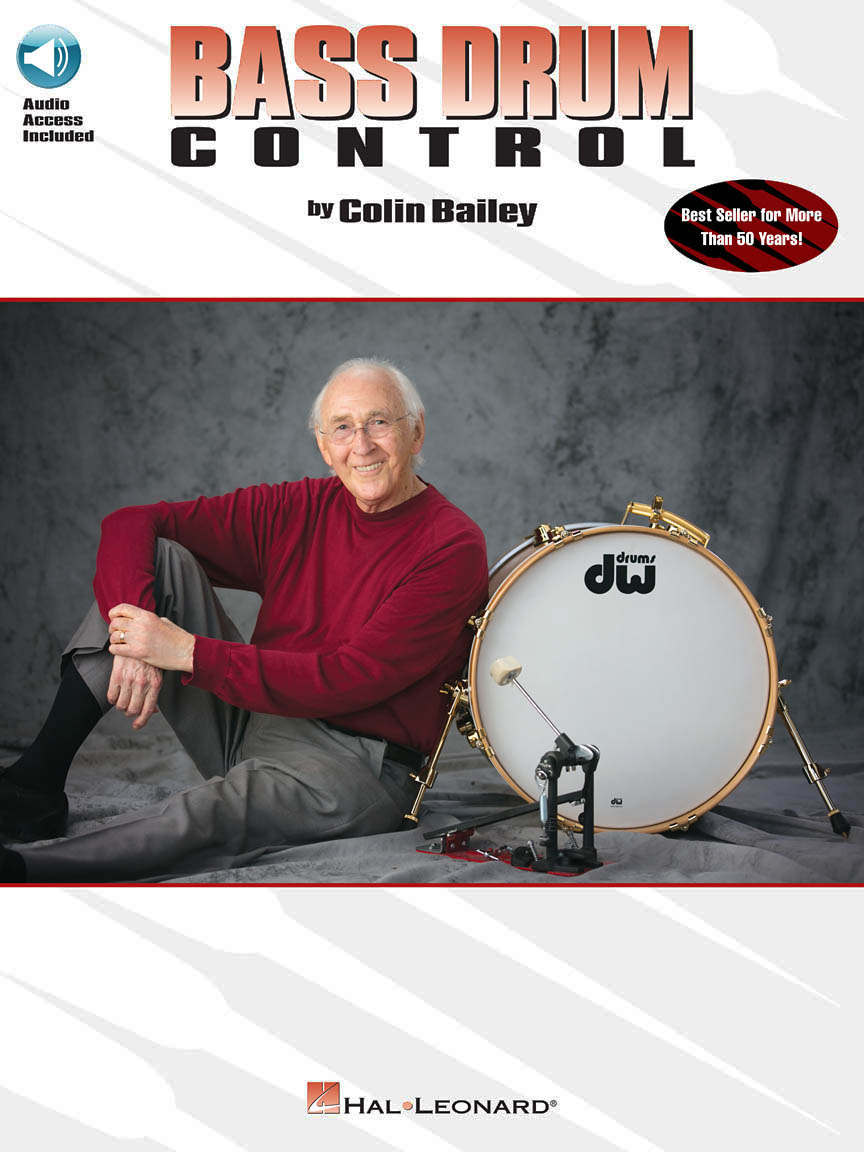 We’ve been focusing too much on hand development, haven’t we? But don’t worry, this book is a step in the right direction.
We’ve been focusing too much on hand development, haven’t we? But don’t worry, this book is a step in the right direction.
This 34 pages book from 1998 is a bestseller in the drumming world and it focuses on developing your ability to play a single bass drum pedal fluently.
Colin wrote it with the single bass drum pedal in mind, but you can easily adapt all the exercises for double bass drum pedal if that’s your thing.
The book itself starts with single hand-to-foot combinations but later progresses through more complex bass drum patterns.
The exercises also include rudiments between the hand and the foot, two and four-bar exercises, double and triple patterns, and much more.
You’ll also get access to 18 audio tracks to easily follow the book, with a playback option and other player functions like speed, loop points, and pan.
If you’re someone that learns better by watching instead of reading or hearing, there’s also a DVD where the master itself explains his bass drum technique in detail as he follows the book (comes with a downloadable e-book).
To conclude, if you’re a beginner or someone that feels that their foot skills don’t match their hands, this book is great to start gaining some control over your bass drum technique.
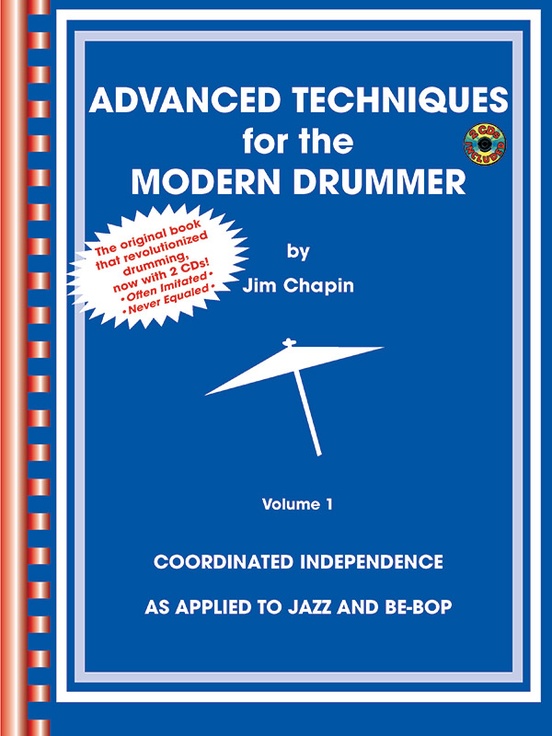 Jim Chapin, the “Father of Jazz Independence”, wrote Advanced Techniques for the Modern Drummer back in 1948.
Jim Chapin, the “Father of Jazz Independence”, wrote Advanced Techniques for the Modern Drummer back in 1948.
It’s a 64 pages book and thankfully, two CDs so you can easily follow the exercises (really helpful if you’re not the best at reading drum sheet music).
I said thankfully because it’s not an easy book to follow by any means, especially if you’re a beginner or someone that never played Jazz in their life.
The book has many sections and each section of the book has three different parts: exercises, solos exercises, and melodic exercises.
Following through the book allows you to reach the next level in terms of independence and coordination, speed, power, and endurance on the drum kit.
It’s aimed at Jazz and Be-Bop drumming but that doesn’t mean you can’t apply its concepts to different music genres.
Most people consider it a classic and agree that it should be on every drummer’s shelf, so do yourself a favor and get your copy.
Conclusion
After learning how to read drum sheet music, the next logical step is to add some material to your music library.
This is, at least for me, the 10 indispensable books every drummer should own and follow-through (you won’t become the next Buddy Rich if you don’t practice at all).
There are a few honorable mentions I should add, like:
- The Art of Bop Drumming by John Riley
- The Commandments of R&B Drumming by Zoro
- Realistic Rock by Carmine Appice
- The Sound of Brushes by Ed Thigpen
- Buddy Rich’s Modern Interpretation of Snare Drum Rudiments by Buddy Rich and Henry Adler
- Groove Essentials by Tommy Igoe
I hope this article encouraged you to get behind the drum kit to practice and reach the next level of drumming, even if it’s just a hobby.

